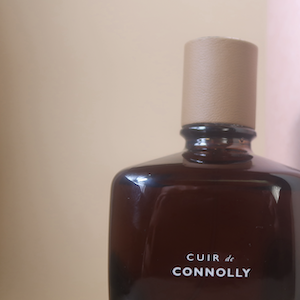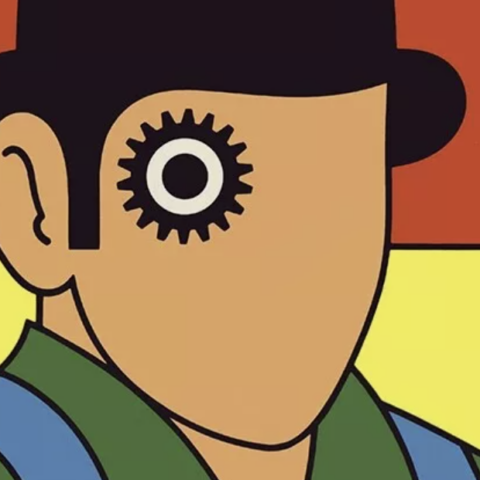From Words to the Silent
By Charlene Pepiot
If you hear the names of century-old books like Frankenstein or The Hunchback of Notre Dame, you could instantly say something about a character or the plot, even if you’ve never picked up the book in your life. Film has played a major role in making these stories part of popular culture, and its been doing so from its infancy when sound on film was thought impossible. Read From Words to the Silent to discover seven classic novels that early filmmakers sought to put on screens before all else.
- The Hunchback of Notre Dame (1923)
Before Universal Pictures had the Boris Karloff creature in Frankenstein or Bella Lugosi’s Count Dracula, its major monster was Quasimodo from their adaptation of author Victor Hugo’s The Hunchback of Notre Dame. The actor Lon Chaney shows why he is often dubbed “The Man of a Thousand Faces” with his portrayal of the hunchback. Chaney wore a 5-20 pound plaster hump for the role that was held in place by a leather harness around his waist along with shoulder straps to keep the actor in a hunched position. He also utilized cotton and colodium to alter his cheeks along with a wig and fake teeth to make the hunchback a truly shocking sight to behold.
The film is set to receive a modern remaster with Eureka Entertainment’s Blu-ray version complete with a 4K restoration. This is the first time the classic film will be available on Blu-ray for UK audiences and will be available from 17 October 2022.

2. Nosferatu (1922) [aka Dracula]
If you’ve ever seen the bald, uncanny vampire Nosferatu, you will know that he’s certainly no Count Dracula, but don’t be fooled. The classic silent vampire film was an unofficial adaptation of Bram Stoker’s novel. When the film’s director couldn’t secure the rights to produce a Dracula adaptation from Bram Stoker’s widow, he simply altered a few events and names, changed Count Dracula to Count Orlok, and called it a day.
The Stoker family was not impressed, and after suing, they won the lawsuit and all copies of Nosferatu were ordered to be destroyed. Luckily for film-buffs everywhere, a few copies survived and the menacing vampire continues to be referenced in pop culture, from screenings at Halloween to a gag on the children’s show SpongeBob Squarepants.
3. The Man Who Laughs (1928)
While Victor Hugo’s Hunchback of Notre Dame may be more well-known in popular culture, the film adaptation of his novel The Man Who Laughs has the honour of inspiring the appearance of the Joker, one of Batman’s most iconic enemies, due to his uncanny permanent grin. Gwynplaine is nothing like Batman’s nemesis though and is a sympathetic character who was disfigured as a child and pines for the love of a blind girl. The film is a romantic melodrama, despite the arguable creepiness of Gwynplaine’s permanent laughing grin, and a great watch!
4. Phantom of the Opera (1925)
A novel set in an opera house may not be your first choice for a silent film adaptation, but this 1925 Universal classic has gone down as one of the greatest silent films of all time.
Based on the novel by author Gaston Louis, Lon Chaney carried his brilliant performance as the hunchback over into Phantom of the Opera, with his makeup job looking terrifying even after nearly a century.
5. Dr Jekyll and Mr Hyde (1920)
People certainly liked their horror adaptations back in the silent age. Paramount’s 1920 take on The Strange Case of Dr. Jekyll and Mr. Hyde by Robert Louis Stevenson has a great cast along with an excellent design for the infamous Mr. Hyde.
6. Frankenstein (1910)
Before Hollywood was the go-to place for film production, New York reigned supreme with Edison Motion Pictures (yes, the same Edison who invented the light bulb) having a strong hold on the silent film era. Their take on Frankenstein in 1910 predates Universal’s classic adaptation with Boris Karloff by over two decades. With a run time of about 13 minutes, many plot points were left out or greatly condensed, but in their place is a truly original and unique take on the classic novel by Mary Shelley not marred by the pop culture staples of the tale we have today.
7. Alice in Wonderland (1903)
The first adaptation of Lewis Carroll’s classic Alice in Wonderland goes all the way back to 1903, only eight years after the birth of cinema. Mostly filmed in Oxford’s Port Meadow in England, the 120-year-old film has surprisingly good special effects with Alice shrinking and reaching for a window, among other moments.
At the time of its creation, the film was the longest film produced by Britain, with it being 800 feet of film or roughly 12 minutes. Sadly, damage to the only surviving copy has made the restored version only 9 minutes and 35 seconds. Looking at the shaky quality of the silent film is a reminder of how lucky we are to have been able to preserve this silent treasure before any more of it was lost.
Each of these classic novels has gone on to inspire multiple film adaptations, but there’s a certain charm to watching their earliest incarnations. In a way, you can witness the medium of film evolve through the special effects and storytelling seen in these classic films and their later versions.
Preorder Eureka’s Hunchback of Notre Dame remaster here
If you enjoyed From Words to the Silent, why not learn about lost films that were eventually found here
.Cent Magazine, London. Be Inspired; Get Involved.





